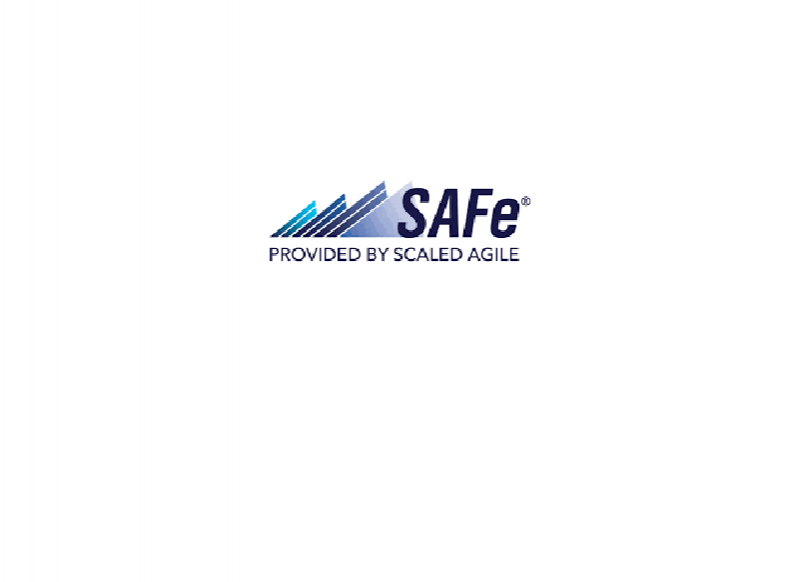An organisation that uses SAFe could potentially benefit from adoption a different language and process around the concept of Impact – using both business impact and behavioural impact when designing solutions and prioritizing the program and team backlogs.
Furthermore, the Impact Solution Design method could strengthen stakeholder interaction and customer centricity with a proven process for applying design thinking with the end goal of delivering higher impact in shorter time. The output of the Impact Solution Design could be used as ART input.
Simply put, Half Double could extend SAFe with the necessary tools to be able to deliver not only great solutions, but also the necessary change in the organisations that are to use the solution.
On the other hand, Half Double could benefit from the SAFe approach in terms of integrating Program and Team backlogs with the Impact Solution Design. Furthermore, the value stream setup and multiple SAFe roles would provide a pre-defined stakeholder landscape to relate to pulse checks and thereby ensure stakeholder satisfaction.
Agile product delivery with agile teams create a strong flow
SAFe has a complete description of how to achieve flow at both team, program, large solution and enterprise levels. The principles are in essence identical to Half Double and inspired by Lean and SCRUM methodology. An organisation, that has adopted SAFe will most likely not benefit from adopting new methods to achieve flow. The main reason is that Half Double flow is based on SCRUM methodology such as visual planning and high allocation of team members. However, the limitation of the SCRUM methodology is inclusion of broad stakeholders and change behaviour management. The Half Double rhythm in key events include this aspect and can easily be added to the Project Increment in SAFe.
An organisation that has adopted Half Double will with ease be able to adopt the agile product delivery methods that SAFe uses to enable synchronisation across multiple teams – e.g., multiple projects running in the same cadence. This could benefit “collocation design” with 50% allocation of the team as the cadence is created for a group of projects and assigned for fixed periods.
Leadership as add on to the lean-agile leadership competence
The leadership dimension of Half Double focuses on the two roles of Project Leader and Project Owner and acknowledges the importance of direct link to a (portfolio) leadership team. SAFe has several more roles and teams and adds a strong focus on technical leadership as well as business leadership.
Half Double could help SAFe with a simple configuration of teams and leadership roles. In Half Double the Project leader is leading the project impact, stakeholder facilitation and are responsible for motivation of the individual. A broader responsibility than the Scrum Master in SAFe. Also, the Project Owner role would include the link from project level to business owner level simplifying the number of roles in SAFe (product owner + product management + business owner) to one role. Also, the “Reflective and adaptive mindset” could inspire the Lean-Agile leadership competence in terms of leveraging the reflection and behavioural change competence in the SAFe Enterprise.
Half Double could benefit from the SAFe agile team setup and elaborated role descriptions to scale and align roles cross organisational roles in feature-oriented organisation. Furthermore, in terms of the portfolio leadership SAFe could enrich Half Double with terminology and methods around technical leadership for large technical solutions.
Summarising
SAFe and Half Double are close in terms of underlying philosophy, and both deploys underlying principles from Agile and Lean. SAFe addresses a lot more on the scalability and synchronisation on complex technical solutions while Half Double addresses the behavioural change needed in order to create value from the complex solutions.
Half Double is “only” a project methodology whereas SAFe is a framework for scaling one agile team to many agile teams running in Agile Release Trains and coordinated with the overall portfolio and Development Value Streams of the enterprise.
Simply put, Half Double could work well as the “project engine” in a SAFe setup instead of a using the default “SCRUM project engine” embedded in SAFe. This would extend the impact dimension in each agile team to include behavioural impact as well as technical outputs. It would also extend the leadership dimension in agile teams in terms of a reflective practise to support the people / stakeholder dimension and not just technical outputs.
Half Double could extend SAFe with the necessary tools to be able to deliver not only great solutions, but also the necessary change in the organisations and with customers that are to use the solution.
Half Double could benefit from the Scaled Agile Framework when scaling from one project to many projects in a platform creation or “feature factory” oriented organisation.
Both the Half Double Methodology and the Scaled Agile Framework are designed to be adapted to the specific context, which is called Local translation in Half Double and Configuration in SAFe.
Download the full document "Coexistence between Half Double and SAFe" underneath.



